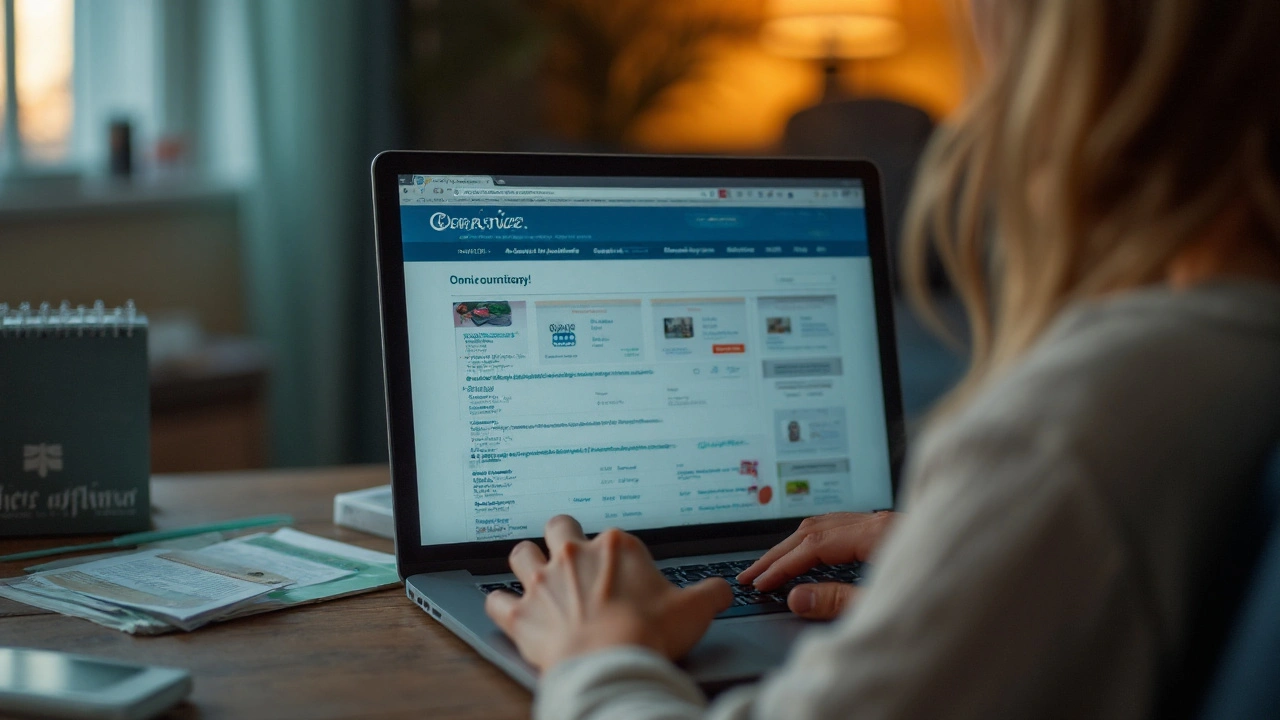
You want real celecoxib, you want it cheap, and you want it delivered without drama. That’s doable-if you know where to shop and what to avoid. This guide shows you how to confirm you’re getting legitimate celecoxib (the generic of Celebrex), what a fair 2025 price looks like, how to cut that price even further, and the safety steps you should never skip. Prescription rules still apply in most countries, and there are real medical risks with NSAIDs. If you’re ready to save money the right way, keep going.
What You Get When You Buy Generic Celebrex Online (Benefits, Specs, and Fit)
Quick context: celecoxib is a COX-2 selective NSAID used for osteoarthritis, rheumatoid arthritis, ankylosing spondylitis, acute pain, and primary dysmenorrhea. It’s the generic of Celebrex, approved by the FDA and available in the US, UK, EU, Canada, Australia, and many other regions. Generics must meet strict bioequivalence standards, so they match the brand on active ingredient, strength, quality, and performance. The differences are usually the inactive ingredients and the logo on the capsule.
Common strengths: 50 mg, 100 mg, 200 mg, and sometimes 400 mg capsules. Popular adult dosing (always verify with your prescriber):
- Osteoarthritis: 200 mg once daily (or 100 mg twice daily).
- Rheumatoid arthritis (adults): 100 mg twice daily.
- Ankylosing spondylitis: 200 mg once daily (some need 400 mg/day).
- Acute pain/dysmenorrhea: Often 400 mg once, then 200 mg if needed on day 1; then 200 mg twice daily as needed for a short course.
Max adult dose is typically 400 mg/day. Use the lowest effective dose for the shortest time-this isn’t just frugal; it’s safer. That guidance echoes the FDA boxed warning for NSAIDs regarding heart and stomach risks.
Why celecoxib instead of ibuprofen, naproxen, or diclofenac? For many, it’s the stomach. COX-2 selectivity reduces the rate of endoscopic ulcers and clinically significant GI bleeding compared to nonselective NSAIDs, especially when used without aspirin. In the large PRECISION trial (NEJM, 2016), celecoxib was noninferior for major cardiovascular outcomes versus naproxen and ibuprofen and caused fewer GI and renal events at moderate doses. That said, all systemic NSAIDs carry cardiovascular and kidney risks; this isn’t a free pass.
What to expect when you order online:
- Prescription required in most countries (US, UK, EU, CA, AU). If a site skips this, that’s a red flag.
- Generic capsules from reputable manufacturers (you might see imprints like “CELE 200,” or manufacturer codes). Color and imprint vary by maker.
- Blister packs or pharmacy bottles with safety seals, lot numbers, and expiration dates.
- Standard storage: room temperature (20-25°C/68-77°F), in a dry place, away from heat and moisture.
Best fit: adults who need an NSAID and are at higher GI risk (history of ulcers, older age, on SSRIs/SNRIs, or low-dose aspirin) or those who didn’t tolerate other NSAIDs. Not a good fit: recent heart attack, right after CABG surgery, uncontrolled hypertension, advanced kidney disease, active GI bleeding, late pregnancy, or a history of severe reactions to sulfonamides. If any of these sound close, talk to your prescriber before you shop.
Real-World 2025 Prices, Coupons, and the Simple Ways to Pay Less
Here’s what “cheap” actually means in 2025. Prices fluctuate by country, insurer, and pharmacy network, but these US ranges are realistic for generics. Local prices outside the US will differ, often similar or lower in public systems.
| Strength & Quantity | Typical Retail Cash | With Popular Coupons/Discount Cards | Mail-Order/90-Day (Plan or Cash) |
|---|---|---|---|
| Celecoxib 100 mg, 30 caps | $35-$85 | $6-$15 | $15-$35 (90 caps) |
| Celecoxib 200 mg, 30 caps | $45-$120 | $8-$20 | $20-$45 (90 caps) |
| Celecoxib 200 mg, 60 caps | $75-$180 | $15-$35 | $35-$60 (90 caps) |
| Celecoxib 200 mg, 90 caps | $110-$260 | $22-$60 | $30-$70 (90-day supplies) |
What those numbers mean for your wallet: with a common coupon or discount card, many US pharmacies sell a 30-count of 200 mg celecoxib in the single digits to low teens. A 90-day supply via mail-order or retail can land in the $30-$60 range. Without a coupon, you could pay several times more. If you’re outside the US, public formularies or private plans often set the price-check your plan’s preferred pharmacy.
Five fast ways to lower your price:
- Use a coupon or discount card. Even with insurance, sometimes the cash coupon beats your copay. Ask the pharmacist to run both and pick the cheaper one.
- Ask for a 90-day script. The per-capsule price often drops with a 90-day fill, and you pay one dispensing fee instead of three.
- Stick to common strengths. 100 mg and 200 mg are usually stocked and discounted more aggressively than less common sizes.
- Price-compare across 3-4 pharmacies. Large chains, warehouse clubs (often allow nonmembers at the pharmacy), and independent pharmacies can differ a lot.
- Check mail-order from your insurance plan. If you’re insured, the plan’s mail-order pharmacy can be the lowest net cost, especially for 90 days.
Pricing notes and expectations:
- Brand Celebrex is usually much pricier and offers no extra pain relief for most people. Stick to generic unless your clinician has a specific reason.
- In the US, moving from a 30-day to a 90-day supply can cut the per-day cost by 30-60%.
- If you see aggressive “no prescription required” sites with ultra-low prices, assume counterfeits or unsafe imports.
Insurance vs. cash: ask the pharmacy to compare three prices for you-your insurance copay, their cash price, and a major coupon price. Pick the lowest, then ask the pharmacy to keep that pricing method on file for the next refill.

Is It Safe to Order Celecoxib Online? Licenses, Red Flags, and a Quick Checklist
Yes-if you buy from licensed pharmacies. US regulators (FDA’s BeSafeRx program) and the National Association of Boards of Pharmacy warn that many online “pharmacies” sell fakes, substandard meds, or the wrong dose. The same caution applies globally, which is why many countries maintain public registries of licensed pharmacies.
How to verify legitimacy (by region):
- US: Look for NABP accreditation (the .pharmacy Verified Websites program) and state pharmacy licensure. A real pharmacy will ask for a valid prescription and list a physical location and a way to reach a pharmacist.
- UK: Check the MHRA register and the GPhC for online pharmacy approval. UK-legal sites display the EU/UK common distance-selling logo linking to a registry page.
- EU: The EU Common Logo should click through to a national regulator page confirming the site. National competent authorities (like BfArM in Germany) list licensed outlets.
- Canada: Verify with your province’s pharmacy college registry. Health Canada maintains the Drug Product Database for product legitimacy.
- Australia: Check the Australian Health Practitioner Regulation Agency (AHPRA) and state pharmacy councils; TGA oversees medicines.
Red flags that should stop you cold:
- No prescription required or a “doctor” rubber-stamps everything instantly with no questions.
- No license info, no pharmacist contact, no clear return policy, or no privacy policy.
- Unreal prices or offers like bulk kilos, mixed lots, or mystery imports.
- Unlabeled bottles, missing lot numbers, or packaging that doesn’t match known manufacturers.
- Site pushes you to pay by crypto or wire only, with no mainstream payment option.
What a safe checkout looks like:
- Site verifies your prescription or offers a legit telehealth intake with real screening questions.
- You see the pharmacy’s license number and the pharmacist’s contact information.
- Clear drug name (celecoxib), strength, manufacturer, NDC/product code, quantity, and price before you pay.
- Shipping with tracking, tamper-evident packaging, and a receipt that lists the lot and expiration date.
- Medication guide or patient leaflet included. In the US, NSAIDs come with an FDA Medication Guide.
Simple pre-purchase checklist:
- I have a valid prescription matching my name, drug, strength, and quantity.
- I confirmed the pharmacy is licensed in my country/state.
- The site shows the exact product details and final price, including shipping and taxes.
- There’s a reachable pharmacist for questions.
- Return/refund policy and delivery timelines are clear.
One more sanity check: when the package arrives, compare the capsule imprint and color to what the pharmacy describes, and make sure the label and lot/expiry are present. Any doubt? Call the pharmacist before taking the first dose.
Side Effects, Interactions, and Who Should Avoid Celecoxib
All NSAIDs, including celecoxib, carry boxed warnings for cardiovascular and gastrointestinal risks. That’s not fearmongering; it’s straight from regulators like the FDA, EMA, and national agencies.
Key risks to understand:
- Heart and stroke risk: NSAIDs may increase the risk of serious cardiovascular events, which can happen early in treatment. Don’t use right before or after CABG surgery.
- Stomach/intestinal bleeding and ulcers: Risk goes up with age, history of ulcers, higher doses, longer use, alcohol, smoking, corticosteroids, SSRIs/SNRIs, and anticoagulants.
- Kidney effects: NSAIDs can reduce blood flow to the kidneys. Risk is higher if you’re dehydrated, older, have CKD, heart failure, or you’re on ACE inhibitors/ARBs plus diuretics (“triple whammy”).
- Blood pressure: NSAIDs can raise blood pressure and blunt the effects of some antihypertensives.
- Allergy: Celecoxib contains a sulfonamide moiety. If you’ve had serious reactions to sulfonamide antibiotics or celecoxib before, avoid it.
- Liver: Rare liver injury can occur. Seek help if you see jaundice, dark urine, or severe fatigue.
Pregnancy, fertility, and breastfeeding:
- Pregnancy: Avoid NSAIDs at 20 weeks or later due to fetal kidney problems and low amniotic fluid; avoid in the third trimester because of the risk of premature closure of the ductus arteriosus (FDA guidance).
- Trying to conceive: NSAIDs can sometimes interfere with ovulation; discuss with your clinician if you’re trying to get pregnant.
- Breastfeeding: Small amounts may pass into milk; short courses are often considered compatible, but confirm with your clinician.
Common side effects: heartburn, stomach pain, gas, diarrhea, swelling in legs/feet, dizziness, headache. Rare but urgent: chest pain, shortness of breath, weakness on one side, slurred speech, black/tarry stools, vomiting blood, severe rash, or facial swelling-call emergency services.
Important interactions and combinations to avoid or monitor:
- Anticoagulants (warfarin), antiplatelets (clopidogrel), and SSRIs/SNRIs: higher bleeding risk.
- Low-dose aspirin: reduces celecoxib’s GI advantage; if you must combine, ask about adding a PPI for GI protection.
- ACE inhibitors/ARBs + diuretics: higher kidney risk; monitor creatinine and potassium.
- Lithium: NSAIDs can raise lithium levels; monitor closely.
- Methotrexate (high doses): potential toxicity; timing and monitoring matter.
- CYP2C9 inhibitors or poor metabolizers: celecoxib exposure increases; dose adjustment may be needed.
Practical safety habits:
- Use the smallest dose that controls your symptoms, for the shortest time.
- Take with food if you get stomach upset. Avoid heavy alcohol while using NSAIDs.
- If you need daily therapy for more than a few weeks, ask about GI protection (PPI) and whether you need periodic blood pressure and kidney checks.
- Keep a simple med list on your phone; show it to your prescriber and pharmacist to catch interactions.

Alternatives, FAQs, and Your Next Steps
How does celecoxib compare to other pain relievers?
- Ibuprofen/naproxen: Widely available and cheap. Good pain relief. More GI risk than celecoxib at equivalent effect, especially without a PPI. Naproxen may be preferred for some patients with cardiovascular risk by certain clinicians, though evidence is nuanced.
- Diclofenac: Strong anti-inflammatory action but carries cardiovascular risk concern at higher doses.
- Meloxicam: Once-daily dosing, inexpensive; less selective than celecoxib for COX-2.
- Topical NSAIDs (e.g., diclofenac gel): Strong first-line for knee/hand OA pain (ACR/AF 2020-2022 guidance), minimal systemic side effects. Consider before oral NSAIDs if the pain is localized.
- Acetaminophen (paracetamol): Safer for stomach/heart but weaker for inflammatory pain; watch liver dose limits.
- Non-drug options: Physical therapy, weight management, heat/cold, joint-friendly exercise; they often reduce the dose you need.
Best for / not for (quick take):
- Best for: Adults needing an NSAID who’ve had stomach issues on ibuprofen/naproxen, or who need once-daily dosing.
- Not for: Late pregnancy; recent MI/CABG; active GI bleeding/ulcer; severe kidney disease; serious sulfonamide allergy; uncontrolled hypertension.
Mini-FAQ
- Is celecoxib really the same as Celebrex? Yes. Regulators like the FDA and EMA require generic bioequivalence. The active drug is the same; you may see different fillers or capsule looks.
- Can I order it without a prescription? In most countries, no. US, UK, EU, CA, and AU require a valid prescription. Sites selling without one are not legitimate.
- What’s a fair 2025 price? In the US, many pay under $20 for 30 capsules of 200 mg with widely available coupons; a 90-day supply often lands $30-$60 via mail-order or discount pricing.
- How fast will it ship? Licensed pharmacies usually deliver in 2-7 business days domestically; mail-order plan pharmacies often quote 3-5 days after processing the prescription.
- Do I need to taper? No. You can stop celecoxib without tapering. Pain may return-talk to your clinician about other options if you need ongoing relief.
- Can I split capsules? No. Celecoxib comes as capsules meant to be swallowed whole.
- What if I take low-dose aspirin? The GI benefit of celecoxib shrinks when combined with aspirin. If you must combine, ask about a PPI and confirm your total cardiovascular plan with your clinician.
Decision help
- If you mainly have knee OA pain near the skin: try topical NSAIDs first. If that’s not enough, discuss adding or switching to oral celecoxib.
- If other NSAIDs bothered your stomach: celecoxib is a reasonable next step. Consider a PPI if you have risk factors for ulcers.
- If you have high cardiovascular risk or recent cardiac events: ask your cardiology or primary team before starting any NSAID.
- If you’re on complex meds (warfarin, lithium, methotrexate): you need pharmacist input before you start.
Next steps (ethical and safe):
- Confirm you’re a candidate. If you have heart, kidney, stomach, or pregnancy concerns, message your clinician first.
- Get a valid prescription. Ask for 90 days if you’ll use it routinely-it’s cheaper.
- Choose a licensed pharmacy. Verify via your country’s regulator. Avoid any site that skips prescriptions.
- Price-check three options: your insurance mail-order, a local chain with a coupon, and an independent pharmacy. Pick the lowest total cost, including shipping.
- Place your order and keep the documentation: pharmacy name, lot number, expiration date, and medication guide.
- After your first week, take stock: pain relief, side effects, and blood pressure. If you need daily use beyond a few weeks, ask about lab monitoring and GI protection.
Troubleshooting common snags:
- Pharmacy says “out of stock”: ask if they can order for next-day delivery or transfer the script to another local branch quickly.
- Price jumped at checkout: ask the pharmacist to re-run the claim with the coupon BIN/PCN or check a different coupon from a major provider; sometimes one network excludes certain NDCs.
- Insurance denial: ask your prescriber to code the correct diagnosis and note prior NSAID trials; consider cash pricing with a coupon if it beats your plan.
- Stomach upset: try with food; if it persists, message your clinician about dose adjustments or adding a PPI-do not self-add long-term meds without a plan.
- New swelling or shortness of breath: stop the drug and seek care. NSAIDs can cause fluid retention and rare serious reactions.
One last thing: if you want the simplest route to savings, search for the phrase buy generic celebrex online and then apply the checks above-license, prescription, real pharmacist access, and a coupon price that matches the ranges here. That combination gets you the lowest cost without gambling on your health.





Comments (9)
Shannon Amos
So let me get this straight - you’re telling me I can buy a $20 pill that’s literally the same as the $120 one, and the only difference is the logo? 🤯 I’m not mad, I’m just impressed.
Also, why do I need a PhD just to buy ibuprofen now? This guide is basically a Netflix documentary with footnotes.
Wendy Edwards
OMG YES this is exactly what I needed. I’ve been paying $80 for my 200mg celecoxib and crying every time I open the bottle. I just used a coupon and got it for $12 at CVS - like, I cried again but this time from joy 😭
Also, I’m 62 and have been on this stuff for 3 years and my doc never told me about the 90-day trick. I’m gonna go back and yell at him. Not mad, just disappointed.
PS: I took mine with a cheeseburger and still didn’t get a stomach ulcer. Fingers crossed.
PPS: If you’re on blood thinners, please talk to your pharmacist. I did and they gave me a free lollipop. Worth it.
Ryan C
Wrong. Celecoxib is NOT bioequivalent to Celebrex in all populations. The FDA’s bioequivalence standard is 80-125% AUC and Cmax - but that’s for healthy volunteers. In elderly patients with CYP2C9 polymorphisms, generic exposure can vary by up to 30%.
Also, the PRECISION trial excluded patients with recent MI. So your ‘noninferior’ claim is misleading. And you didn’t mention the 2024 JAMA study showing higher GI bleed rates with certain Indian generics. 🧐
Also, don’t use ‘cheap’ as a descriptor. It’s unprofessional. Use ‘cost-effective.’
Also, your table has inconsistent decimal alignment. Fix it.
Gina Banh
Topical diclofenac gel for knee OA? Yes. Please. My knees feel like they’re made of old tires, but my stomach feels like a volcano. I switched last month. No more pills. Just rub it on, walk 10 minutes, and boom - pain’s gone. No GI drama. No pharmacy drama.
Also, if you’re on SSRIs and NSAIDs? Add a PPI. No exceptions. I lost a friend to a bleed. Don’t be that person.
Deirdre Wilson
Wait… so I can just Google ‘buy generic celebrex online’ and then use the checklist? Like a treasure map but for pills? 🗺️💊
And if the site asks for crypto? Run. Like, full sprint. Even if they say ‘limited stock’ and ‘only 3 left’.
Also, why do pharmacies make you jump through 17 hoops to give you something that’s basically a fancy aspirin? I miss the 2000s.
stephen riyo
Hey, I bought some celecoxib from a site in India last year - $15 for 180 pills. They came in a plastic bag with no label, but they looked like the real thing. I took them for 3 months. No issues. My arthritis is gone. I think the FDA is just trying to protect Big Pharma.
Also, my cousin’s friend’s neighbor got a fake one and his leg fell off - but that was just one guy. I’m fine. I’m 47. I’m strong. I don’t need no prescription. 🤷♂️
Also, why do you people care so much about ‘pharmacist contact’? I just want the pill. I’m not calling them for tea.
Damon Stangherlin
Just wanted to say thank you for this guide. I’ve been scared to buy meds online since my aunt got that fake Adderall that made her hallucinate spiders. This checklist? Perfect. I’m gonna print it out and tape it to my fridge.
Also, I used the coupon and saved $70. I’m gonna treat myself to a pizza. You deserve it after reading all this. 🍕❤️
And yes, I did call the pharmacy. The pharmacist said ‘good question’ and gave me a free sample of ginger chews. That’s the kind of care we need more of.
Amanda Meyer
While the cost-saving strategies outlined here are practical, they must be contextualized within the broader ethical and regulatory frameworks governing pharmaceutical access. The commodification of essential medications under the guise of ‘cheap options’ risks normalizing bypassing clinical safeguards - even if unintended.
The FDA’s BeSafeRx initiative exists precisely because counterfeit drugs are not merely ‘inefficient’ - they are lethal. In 2023, the WHO estimated over 1 million deaths annually from substandard and falsified medicines globally.
Moreover, the normalization of ‘coupon-driven’ pharmacy shopping erodes the patient-provider relationship. Price should not be the primary driver of therapeutic selection when risk profiles vary by comorbidity, pharmacogenomics, and polypharmacy.
That said, the emphasis on verifying licensure, using 90-day fills, and consulting pharmacists is commendable. These are not just cost-saving tactics - they are acts of patient advocacy.
But let’s not pretend this is ‘just shopping.’ It’s healthcare. And healthcare deserves more than a discount code.
Jaspreet Kaur
Life is simple when you stop chasing the cheapest pill and start asking what your body really needs
Some pain is a signal not a problem
Maybe the real savings is not in the price of the capsule but in the quiet after you stop taking it
Try walking. Try heat. Try talking to someone who isn’t a pharmacist
The body remembers what the mind forgets
And sometimes the most expensive thing is the silence between your breaths
But if you need the pill? Get it right. Not cheap. Right.
And if you’re scared? That’s okay. Fear keeps you alive
Now go drink water and breathe